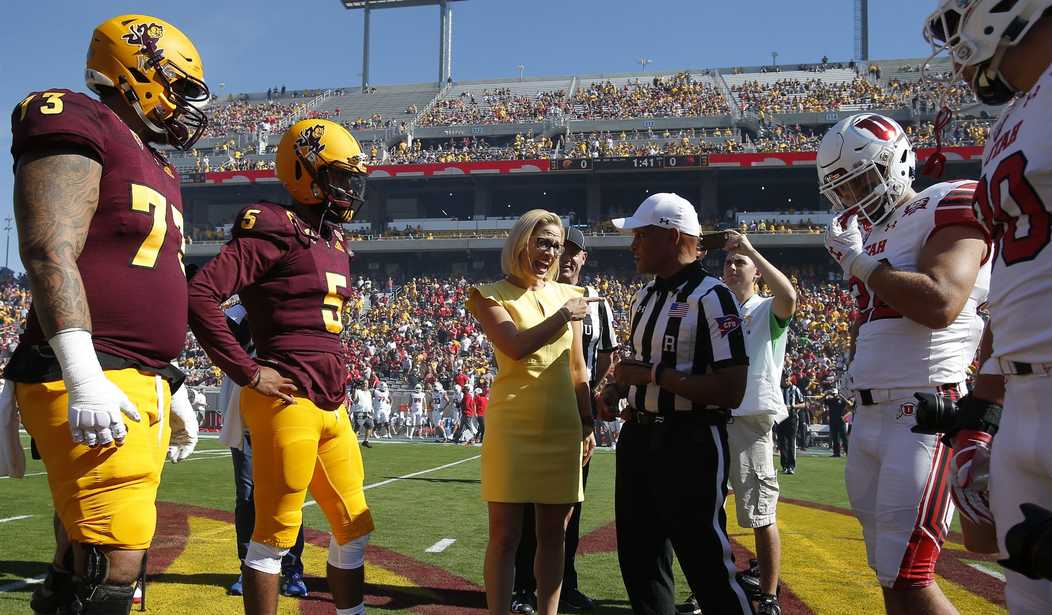The college football landscape has become increasingly wild in recent years. We’ve seen how the transfer portal and name, image, and likeness (NIL) deals have transformed the way players, teams, and even fans have interacted with the sport. Some people have even likened those aspects of college football to the Old West because almost anything goes.
We can add conference realignment to the mix as well. Teams have jumped from one conference to another as long as conferences have been in existence, but teams are starting to switch conferences at a head-spinning pace.
The Southeastern Conference (SEC) has led the way in recent conference expansion. The SEC added the University of Missouri and Texas A&M to the fold in 2012, and Texas and Oklahoma are joining the conference next year. Not only does the upcoming addition of the latter two schools stretch the definition of “Southeastern,” but it also had schools scrambling to revamp schedules to accommodate a larger conference.
Things got even crazier on Friday with more conference realignment news. Two rival conferences have gutted the Pac-12, a conference named for its proximity to the Pacific Ocean and for the fact that it had 12 teams. Not anymore — the University of Washington and the University of Oregon are joining the Big Ten in 2024, while the Big 12 is poaching Arizona, Arizona State, and Utah from the Pac-12. The University of Colorado has already jumped ship to the Big 12 starting next year.
“The day began with hope and nine members for the Pac-12,” writes Ralph D. Russo at the Associated Press. “It ended with the Pac-12 — with roots that date back a century and more NCAA championships than any other — down to four schools and facing extinction because it was unable to land a media rights agreement to match its competitors.”
Recommended: Someone Accidentally Sold Tickets to the Hottest College Football Game of the Season for $5 Apiece!
The schools that are jumping into new conferences shared their excitement on social media:
B1G vibes‼️ Can’t wait to have you ☔️🏈 https://t.co/F7n9vK2oRU
— Washington Football (@UW_Football) August 5, 2023
It’s official.
We’re Big 12 bound.#BearDown pic.twitter.com/1AnRBVd4hI
— Arizona Athletics (@AZATHLETICS) August 5, 2023
B1G moves. #GoDucks pic.twitter.com/vXiSnqREyR
— Oregon Football (@oregonfootball) August 5, 2023
It’s official, Utah Athletics will join the @Big12Conference in 2024!https://t.co/t03Wp0mqqE#GoUtes pic.twitter.com/TyMKMwYs78
— Utah Athletics (@utahathletics) August 5, 2023
The move decimated the Pac-12 which went from nine members to four in the span of a few hours. The conference released a statement, which read in part, “Today’s news is incredibly disappointing for student-athletes, fans, alumni, and staff of the Pac-12 who cherish the over 100-year history, tradition, and rivalries of the Conference of Champions. We remain focused on securing the best possible future for each of our member universities.”
In addition to the Pac-12 dwindling to four members, the moves have helped solidify the “super-conferences.” In addition to the SEC’s growth to 16 teams in 2024, next year the Big Ten will have 18 teams, while the Big 12 will have 16 teams.
In many ways, conference realignment has made a mockery of the names of the conferences. The Southeastern Conference has some teams that are hard to classify as southeastern, while the Atlantic Coast Conference has some teams that aren’t even on a coast, much less the Atlantic. But all the conference craziness this week makes the names of the Big Ten, Big 12, and Pac-12 nothing more than a bunch of numbers and letters.
What’s next for the Pac-12? The Mountain West Conference (MWC) is reportedly considering courting the remaining Pac-12 conference teams.
The MWC will be exploring expansion opportunities with the leftover PAC 12 members.
I also wouldn’t discount some type of merger between the two conferences in some way. Not sure what that would look like or the branding, but certainly could be a possibility.
— Scott Garrard (@ScottyGZone) August 4, 2023
“The Pac-12 is on life support, at best,” writes Jeremy Mauss at Mountain West Wire. “The teams that do not have a current home are Oregon State, Washington State, Stanford, and Cal [the University of California].”
That a smaller conference like the MWC may have to bail out the Pac-12 shows the sad state of a once legendary conference, but it could also be the lifeline that saves the Pac-12.
“The Mountain West has rarely, if ever, been in a position of strength regarding conference realignment,” Mauss points out. “That may change now as these last four schools from the Pac-12 need some help.”
The trouble is that the 12 schools in the MWC can’t simply jump ship to the Pac-12 because the buyout to exit the MWC is a whopping $34 million per school. A merger is a possibility, but that could take years of legal wrangling and discussions about branding and other administrative hurdles.
Regardless of how the Pac-12 has to scramble to maintain credibility (or even viability), it’s clear that the era of the “super-conferences” is here. Welcome to college football in the roaring 2020s, where obviously anything can happen.










Join the conversation as a VIP Member